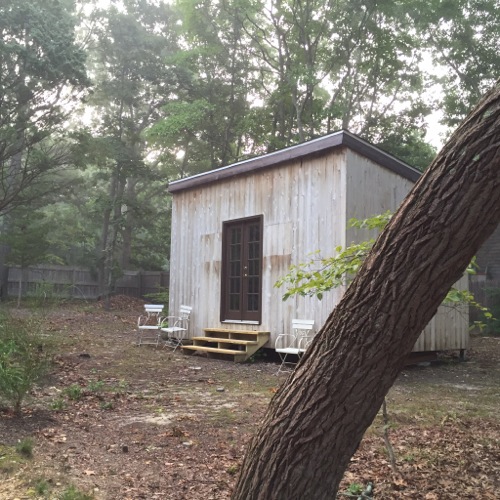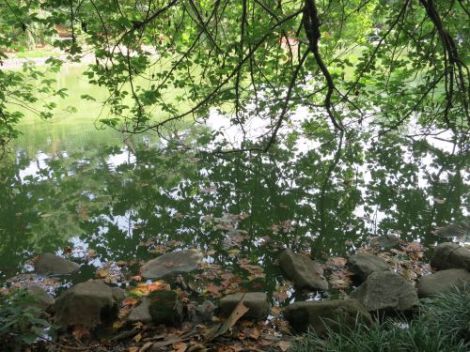
OCTOBER HAS BEEN A MONTH for remembering my love of old houses, which is why I started this blog in the first place, and for being blown away once again by the beauty of Long Island’s South Fork. That includes my own humble half-acre, above and below, whose fall colors are more brilliant than at any time in the decade I’ve been here.

They say it’s because of all the rain we had this season (which continues). Usually, the oak trees that dominate this region turn dull brown in fall, while the red maples and golden hickories are fewer. This year, it seems, the oaks haven’t turned yet and so remain green, while the others have colored up in timely fashion. It’s so blazingly beautiful that for once, I’m not suffering FOMO over not being in New England or the Hudson Valley.
Meanwhile, an article in the East Hampton Star about some local historic preservation awards for two recently restored Colonial-era houses caught my eye, and I trotted over to check them out. One is the early-18th century Hiram Sanford House on Egypt Lane, below, a plain and modest structure behind which new owners are building some kind of modernist bunker out of shipping containers (don’t ask).


Around the corner from it, un-awarded, is an even cuter house of similar vintage, below, which I only noticed because I parked in front of it.

The more outstanding preservation project is the Gardiner Mill Cottage Gallery, in below, a 1750 saltbox with leaded windows. It sits on an open 3-1/2 acre lot that has remained intact in East Hampton Village since 1638, and also contains an 1804 windmill. The building is now a new art museum, open weekends only, with rotating exhibits of historical landscape paintings.


Nearby are two more of the oldest English Colonial houses in the country, Mulford Farm and the so-called “Home Sweet Home” museum, below, plus another fine windmill. I’ve been to these numerous times, and to the lovingly maintained kitchen garden that sits between them.

From there I spotted a house across the main road, below, that appears to have equal historic integrity, with asymmetrical windows and a steeply pitched roof (for shedding snow?) Certainly more than two centuries old, it just sits there with no awards, plaques or fanfare.

Maybe it’s because I haven’t been to Europe in a while so I’m not jaded, or maybe it’s because I’m about to go back to NYC for the winter, but suddenly, the architectural heritage of this pretty town looks especially rich to me.
I can’t say I’m ready to go back to the city, exactly, but it’s been a good long season and things are winding down. The coleus in my window boxes are only a frost away from turning black and falling over.

I’ve planted about 1,000 early bulbs — tarzetta daffodils, crocus, glory of the snow, winter aconite — here and there throughout the property, to welcome me back next spring.

The city has its charms, and I’m determined to rediscover those, too, this winter. But it doesn’t have this:









































































